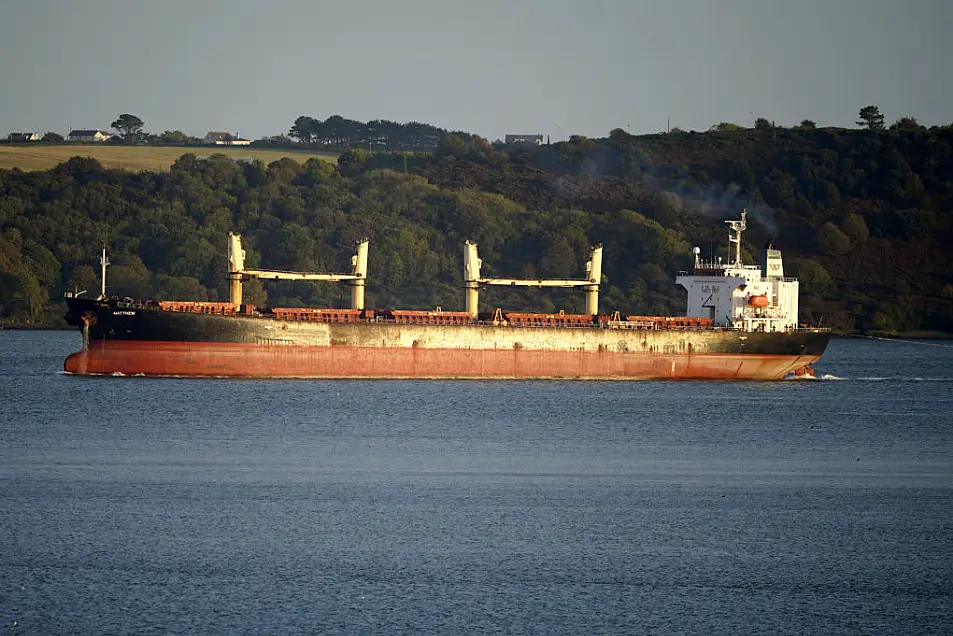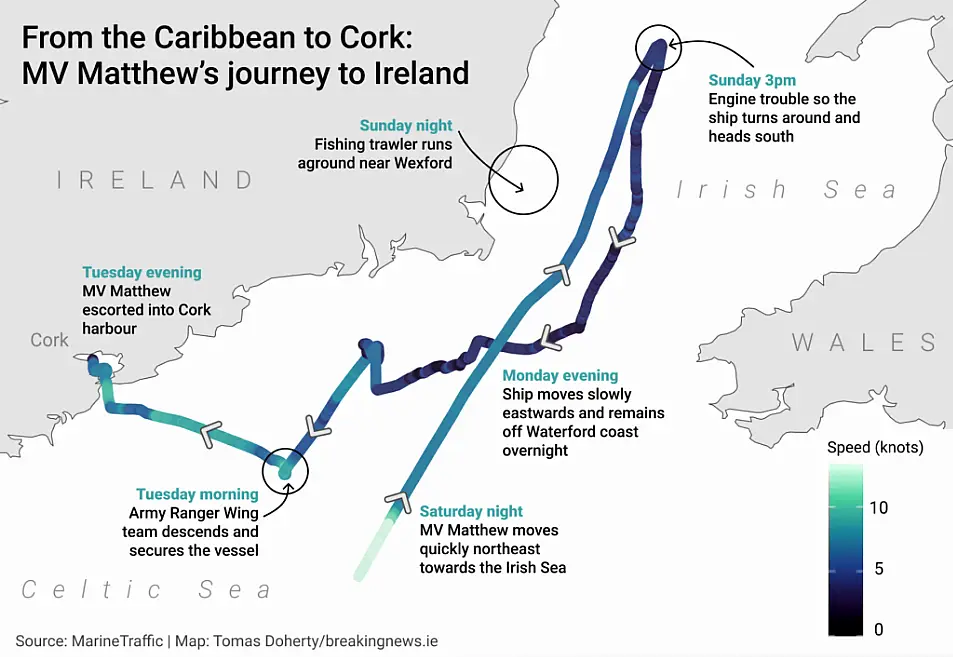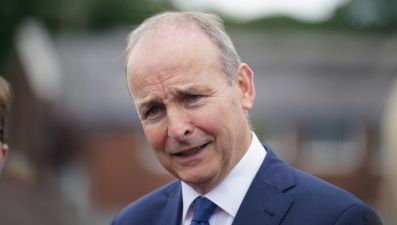The MV Matthew is the ship at the centre of the State's largest-ever cocaine seizure, travelling thousands of kilometres from the Caribbean before being intercepted on Tuesday morning.
Members of the highly-trained Army Ranger Wing descended by fast-rope from a helicopter on to the vessel, which became the focus point of a multi-agency operation on Sunday.
So what do we know about the MV Matthew and how it travelled to Ireland?

What do we know about the ship and its origins?
The MV Matthew is a 190-metre-long, 32-metre-wide bulk cargo vessel originating in South America. It was built in 2001 and sails under the flag of Panama.
Until last month the ship was called the MV Honmom, according to maritime analytics provider MarineTraffic. The name change happened while the ship was enroute between the Dutch islands of Aruba and Curaçao.
These European overseas territories have been noted by researchers as offering advantages to drug smugglers over other parts of the Caribbean.
According to the Center for Strategic and International Studies (CSIS), the Caribbean’s proximity to South America makes it an attractive route for drug traffickers looking for ways to transport large amounts of cocaine to Europe.

From Aruba and Curaçao, cocaine can be shipped directly to the Netherlands via sea or air.
Cocaine shipments from Venezuela often enter these Dutch territories via go-fast boats, according to the CSIS. The distance between Aruba and Venezuela is only 23km.
Which route did the MV Matthew take to Ireland?
The ship left Curaçao on August 19th and travelled to Georgetown in Guyana on the North Atlantic coast of South America.
It appears to have collected cargo here before sailing across the Atlantic to the Canary Islands and then north to Ireland.
Before this week’s dramatic events, the final destination of the journey was supposed to be Gdansk in Poland. This later changed to Belfast.
What happened when the ship reached Ireland?
The MV Matthew entered Irish waters on Saturday, September 23rd. Data from the ship's automatic identification system (AIS) shows it travelled at pace into the Irish Sea on Saturday evening, reaching as far as the south coast of Co Wicklow by Sunday afternoon.

The ship then slowed down and reported engine trouble. The Matthew made a U-turn and plotted a route south to Cork for repairs, reaching the Waterford coast by Monday.
By Monday evening, the captain of the ship was reported unwell and had to be medically evacuated by the Coast Guard.
Then in the early hours of Tuesday morning, the ship was intercepted by the Irish Navy boat LÉ William Butler Yeats and instructed to take a certain course by a Naval captain.
The MV Matthew tried to evade the authorities, prompting the Naval Service to fire two shots across its bow. This was “to compel the vessel to follow the instruction of the ship’s captain,” Naval Service Commander Tony Geraghty told a later press conference.
The Army Ranger Wing then fast-roped on to the deck of the ship from a helicopter as it attempted to manoeuvre away. They secured the vessel and the Navy escorted it to Cork harbour by Tuesday evening.
Separately, a fishing trawler that is suspected to have been used to receive deliveries of drugs ran aground on a sandbank off the coast of Blackwater, Co Wexford, on Sunday night.

After attempts to move the boat were unsuccessful, two men, who are now in custody, were winched to safety by the Coast Guard in the early hours of Monday morning.
What was found on the MV Matthew?
A total of 2,253kg of cocaine was found on the ship, worth an estimated €157 million.
Gardaí said it was the largest drugs seizure in the history of the State.
If the cocaine had reached the street, the value could have increased five-fold or more, depending on how much criminal gangs diluted it.

Do we know which groups were involved?
Assistant Garda Commissioner Justin Kelly confirmed on Wednesday the drugs came from one of the “murderous” cartels which supplies South American drugs to Europe.
An Irish gang is likely to have been involved in landing some of the drugs off the south coast.
Mr Kelly said such a large shipment would not have entered the State’s waters without the involvement of an Irish gang and there are a number with “direct links to South America”.
He said it was "inevitable" that Ireland will see more large drugs shipments like this.

“There is an increase in the amount of cocaine available for a number of geopolitical reasons in South America. There is basically a glut of cocaine on the market,” he said.
“And when you combine that with the increased consumption across Europe, Europe is now the biggest market for cocaine in the world.
“So when you combine those two things together, absolutely, it’s inevitable that we’re going to see organised criminal groups trying to leverage on that, make more money from it, as they always do in situations like this.”
According to The Irish Times, most of the load was destined for the UK and continental Europe where it was to be distributed by local organised crime groups. These will be the focus of investigations by the French police and the UK’s National Crime Agency which worked with Irish authorities on the interception operation.







